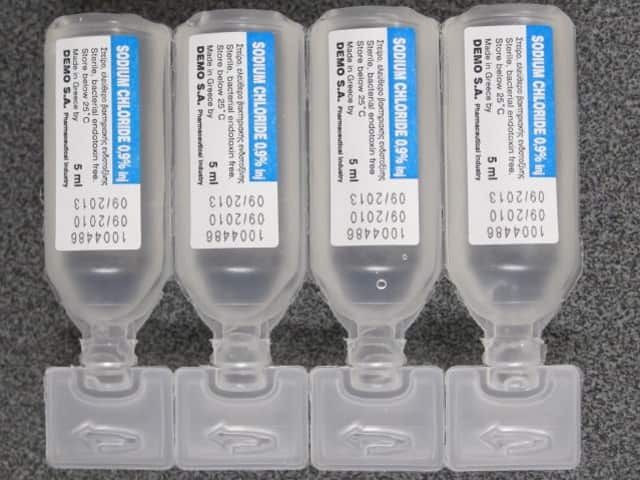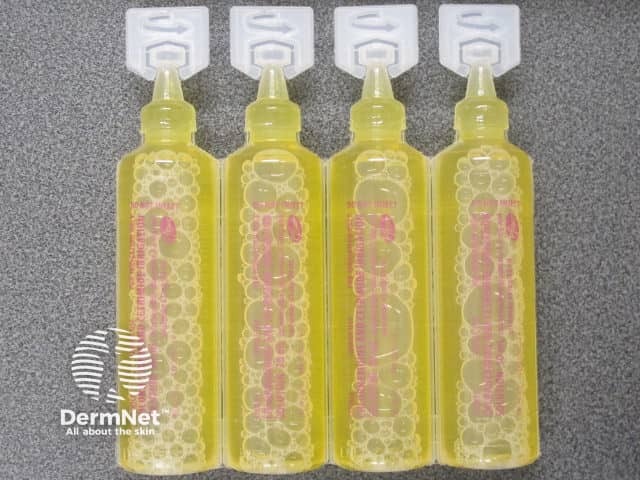Main menu
Common skin conditions

NEWS
Join DermNet PRO
Read more
Quick links
Author: Dr Varitsara Mangkorntongsakul, Junior Medical Officer, Central Coast Local Health District, Gosford/Hamlyn Terrace, NSW, Australia. DermNet Editor in Chief: Adjunct A/Prof Amanda Oakley, Dermatologist, Hamilton, New Zealand. Copy edited by Gus Mitchell/Maria McGivern. June 2019.
Wound cleansers are rinsing solutions used to remove foreign materials on a wound surface and its surrounding skin.
Wound cleansers are a cost-effective means to promote wound healing and reduce the infection rate. However, routine cleansing may also remove products and tissues that are essential for wound healing, such as regenerating epithelium, growth factors, and chemokines.
Tap water

Normal saline

Chlorhexidine solution
A cleanser should be used as the first step in every acute or chronic wound bed preparation. The cleansers are intended to remove foreign bodies and reduce the risk of infection.
In clinical practice, the decision on which cleansing agent to use has been largely based on local guidelines and personal preference.
An ideal wound-cleansing solution would:
Wound cleansers include water, saline, and antimicrobial agents. Dyes and organic mercury compounds are considered obsolete.
Older guidelines have discouraged the use of conventional antiseptic solutions as these impair wound healing, reduce wound strength, and increase the rate of infection.
In contrast, newer broad-spectrum antimicrobial cleansing products can reduce microorganism colonisation and infection rates, and some of them promote wound healing. They can be used in acute and chronic wounds, deep wounds, or superficial wounds.
Hydrogen peroxide (H202) is now rarely used as a wound cleanser.
When used at full strength, hydrogen peroxide may act as a chemical debriding agent that effectively removes debris and necrotic tissues from the wound surface.
Superoxidised solution is also known as superoxidised water, anolyte solution, electrolysed water, and oxidative potential water. It is an electrochemically processed solution made from water and sodium chloride (salt), resulting in a pH neutral combination of hypochlorous acid and sodium hypochlorite.
Octenidine solution is used for superficial skin wounds and should be avoided in wounds near the sinus tracts.
Undecylenamidopropyl betaine is a surfactant (detergent) that effectively removes biofilm and debris and prevents recontamination.